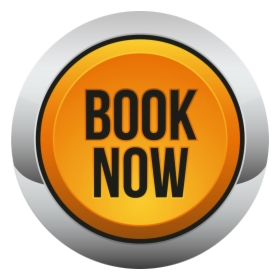
Brain Strokes
Brain stroke, a condition where the blood flow to the brain is interrupted, leading to damage of brain cells, often manifests as sudden weakness, numbness, or difficulty speaking and understanding speech. It occurs due to a variety of factors such as high blood pressure, smoking, diabetes, and high cholesterol levels. In today's fast-paced lifestyle, stress, unhealthy eating habits, and sedentary routines contribute significantly to the rising incidence of brain strokes among people of all ages.
Brain Stroke Symptoms
- Sudden Weakness or Numbness: One of the most common symptoms of a stroke is sudden weakness or numbness, typically on one side of the body. This can affect the face, arm, or leg, making it difficult to move or control those muscles.
- Trouble Speaking or Understanding Speech: Another key indicator is difficulty in speaking or understanding speech. This might manifest as slurred speech, difficulty forming coherent sentences, or confusion when trying to comprehend spoken language.
- Severe Headache: A sudden and severe headache, often described as the worst headache of one's life, can be a warning sign of a stroke, especially if it occurs abruptly without any obvious cause or triggers.
- Vision Problems: Vision disturbances, such as sudden blurred or double vision, or even loss of vision in one or both eyes, can occur during a stroke. This may affect one's ability to see clearly and navigate their surroundings safely.
- Dizziness or Loss of Balance/Coordination: Feeling dizzy or experiencing a sudden loss of balance and coordination can also be indicative of a stroke. This may cause difficulty walking, standing, or maintaining equilibrium, often accompanied by a sensation of spinning or lightheadedness.
Brain Stroke Recovery
- Rehabilitation Therapy: Stroke survivors often undergo various forms of rehabilitation therapy to regain lost skills and improve overall function. This can include physical therapy to improve mobility and strength, occupational therapy to relearn daily tasks, and speech therapy to regain language skills.
- Medication Management: Medications may be prescribed to manage various aspects of stroke recovery, such as blood thinners to prevent future strokes, medications to control blood pressure and cholesterol levels, and drugs to address complications like muscle spasticity or depression.
- Lifestyle Changes: Making healthy lifestyle changes is crucial for stroke recovery and prevention of future strokes. This may include adopting a balanced diet low in salt and saturated fats, engaging in regular exercise to improve cardiovascular health, quitting smoking, limiting alcohol intake, and managing stress.
- Emotional Support: Stroke recovery can be emotionally challenging for both survivors and their caregivers. It's important to seek emotional support from friends, family, support groups, or mental health professionals to cope with feelings of frustration, anxiety, depression, or adjustment difficulties.
- Long-Term Monitoring and Follow-Up: Stroke survivors typically require long-term monitoring and follow-up care to manage ongoing health issues and prevent recurrence. This involves regular check-ups with healthcare providers, monitoring of blood pressure and other risk factors, and adjustments to treatment plans as needed.
Symptoms:
TIA is called ‘mini strokes’. The symptoms are very similar to those of a stroke but the affects are usually temporary, lasting less than 24-hours. Most people who have TIAs fully recover within a few minutes or an hour. Common symptoms may include: sudden weakness and/or numbness of face, arm and/or leg especially on one side of the body; sudden blurred or loss of vision in one or both eyes; sudden difficulty speaking or understanding what others are saying and Sudden dizziness, loss of balance or difficulty controlling movements.
Causes:
The different types and causes of stroke are:
- Ischaemic Stroke: This is the most common type of stroke, particularly in older people. An ischaemic stroke occurs when a clot blocks an artery in the brain. The clot usually forms in a small blood vessel inside the brain that has become narrow through high blood pressure, high cholesterol, diabetes or smoking.
- Embolic Stroke: This occurs when a blood clot or piece of plaque (cholesterol or calcium deposits) on the wall of an artery breaks loose and travels to the brain. When this happens, the flow of oxygen-rich blood to the brain is blocked and tissue is damaged or dies.
- Haemorrhagic Stroke: This occurs when an artery in the brain ruptures (bursts) and leaks blood into the brain (cerebral haemorrhage). This break in the blood pipeline means parts of the brain are deprived of blood and a stroke occurs. Blood irritates brain tissue, causing swelling and pressure, which cause further damage and loss of function. Subarachnoid haemorrhage (SAH) is when blood leaks into the surface of the brain. Intracranial haemorrhage (ICH) is when there is bleeding into the brain tissue itself.

